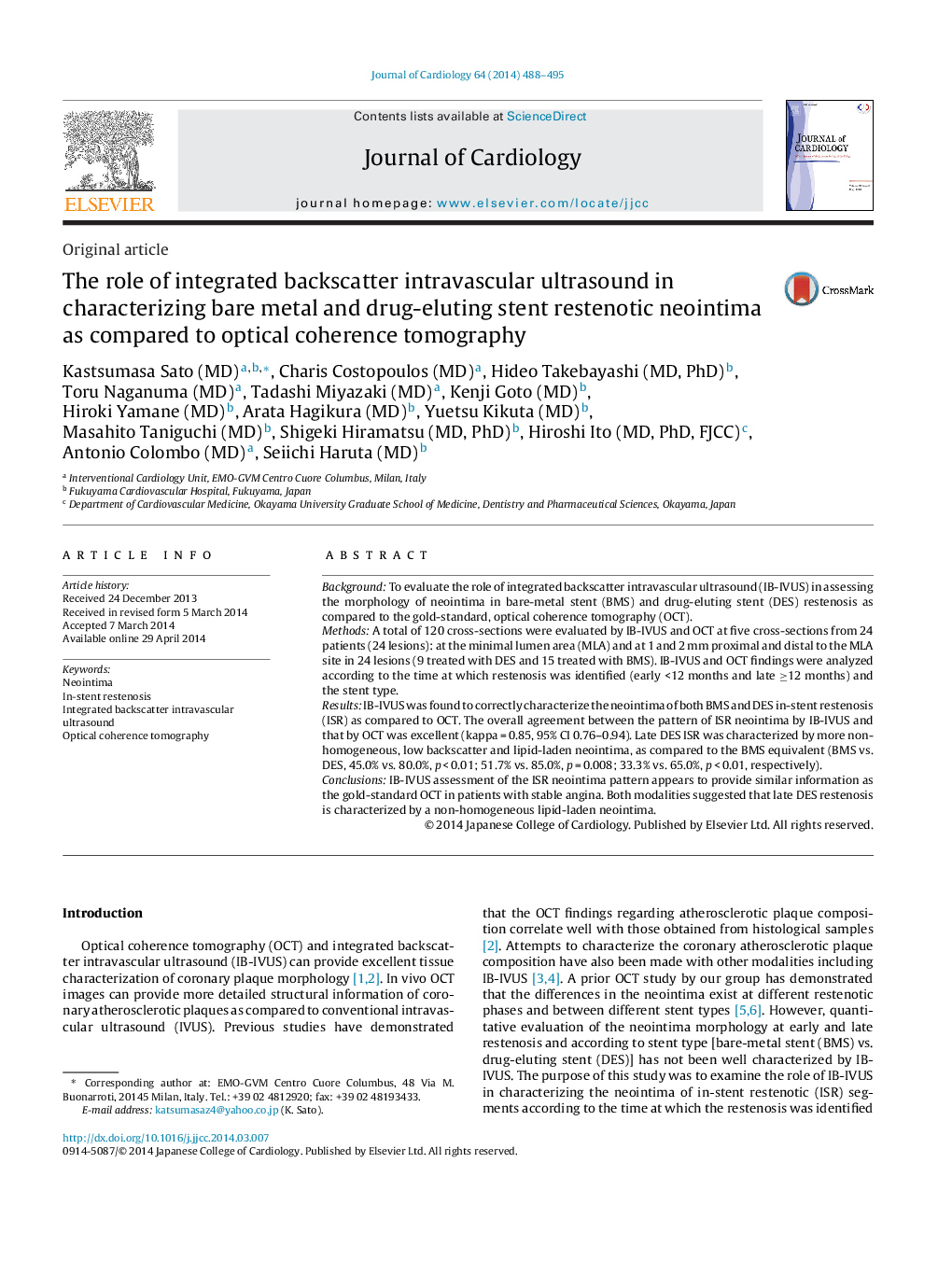| Article ID | Journal | Published Year | Pages | File Type |
|---|---|---|---|---|
| 2963118 | Journal of Cardiology | 2014 | 8 Pages |
BackgroundTo evaluate the role of integrated backscatter intravascular ultrasound (IB-IVUS) in assessing the morphology of neointima in bare-metal stent (BMS) and drug-eluting stent (DES) restenosis as compared to the gold-standard, optical coherence tomography (OCT).MethodsA total of 120 cross-sections were evaluated by IB-IVUS and OCT at five cross-sections from 24 patients (24 lesions): at the minimal lumen area (MLA) and at 1 and 2 mm proximal and distal to the MLA site in 24 lesions (9 treated with DES and 15 treated with BMS). IB-IVUS and OCT findings were analyzed according to the time at which restenosis was identified (early <12 months and late ≥12 months) and the stent type.ResultsIB-IVUS was found to correctly characterize the neointima of both BMS and DES in-stent restenosis (ISR) as compared to OCT. The overall agreement between the pattern of ISR neointima by IB-IVUS and that by OCT was excellent (kappa = 0.85, 95% CI 0.76–0.94). Late DES ISR was characterized by more non-homogeneous, low backscatter and lipid-laden neointima, as compared to the BMS equivalent (BMS vs. DES, 45.0% vs. 80.0%, p < 0.01; 51.7% vs. 85.0%, p = 0.008; 33.3% vs. 65.0%, p < 0.01, respectively).ConclusionsIB-IVUS assessment of the ISR neointima pattern appears to provide similar information as the gold-standard OCT in patients with stable angina. Both modalities suggested that late DES restenosis is characterized by a non-homogeneous lipid-laden neointima.
